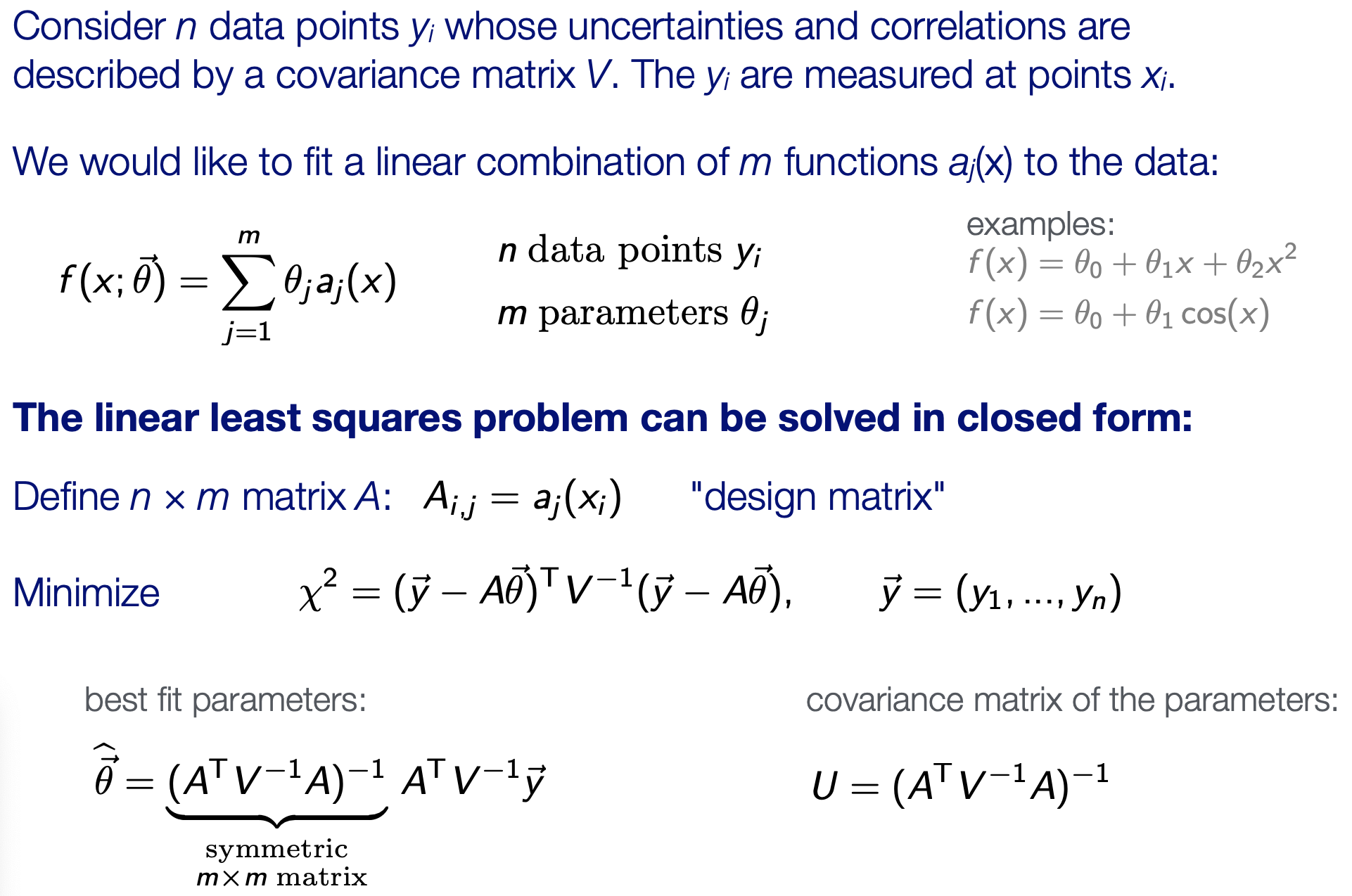Basics¶
In [70]:
A = [1 2 3; 4 1 6; 7 8 1]
3×3 Matrix{Int64}:
1 2 3
4 1 6
7 8 1
In [71]:
tr(A)
3
In [72]:
det(A)
104.0
In [73]:
inv(A)
3×3 Matrix{Float64}:
-0.451923 0.211538 0.0865385
0.365385 -0.192308 0.0576923
0.240385 0.0576923 -0.0673077
Eigenvalues and eigenvectors¶
In [74]:
A = [-4. -17.; 2. 2.]
2×2 Matrix{Float64}:
-4.0 -17.0
2.0 2.0
In [75]:
eigvals(A)
2-element Vector{ComplexF64}:
-1.0000000000000002 - 5.000000000000001im
-1.0000000000000002 + 5.000000000000001im
In [76]:
eigvecs(A)
2×2 Matrix{ComplexF64}:
0.945905-0.0im 0.945905+0.0im
-0.166924+0.278207im -0.166924-0.278207im
Solving a linear equation¶
$$ \begin{pmatrix} 1 & 1 \\ 1 & -1\end{pmatrix} \vec x = \begin{pmatrix} 2 \\ 0 \end{pmatrix} $$
In [5]:
m = [ 1 1; 1 -1] \ [2 ; 0]
2-element Vector{Float64}:
1.0
1.0
Compare Python code
import numpy as np
m = np.linalg.solve(
np.array([[1, 1], [1, -1]]),
np.array([2, 0])
)
In [81]:
# data
x = [-0.6, -0.2, 0.2, 0.6]
y = [5., 3., 5., 8.]
σ = [2, 1, 1, 2];
In [82]:
using LinearAlgebra
V = Diagonal(σ .* σ)
A = [ones(size(x)) x x.^2] # design matrix
U = inv(A' * inv(V) * A)
L = U * A' * inv(V)
# the vector of the fit parameters
θ = L * y
3-element Vector{Float64}:
3.6875000000000004
3.2692307692307687
7.812500000000001
In [83]:
using Plots
function sigma_y_fit(x)
J = [1., x, x^2]
return sqrt(J' * U * J)
end
xv = range(-1, 1, length=100)
yv = θ[1] .+ θ[2] .* xv + θ[3] .* xv.^2
plot(xv, yv, ribbon=sigma_y_fit.(xv), fillalpha = 0.35, label="fit",
size=(400,300))
scatter!(x, y, yerr=σ, label="data")
